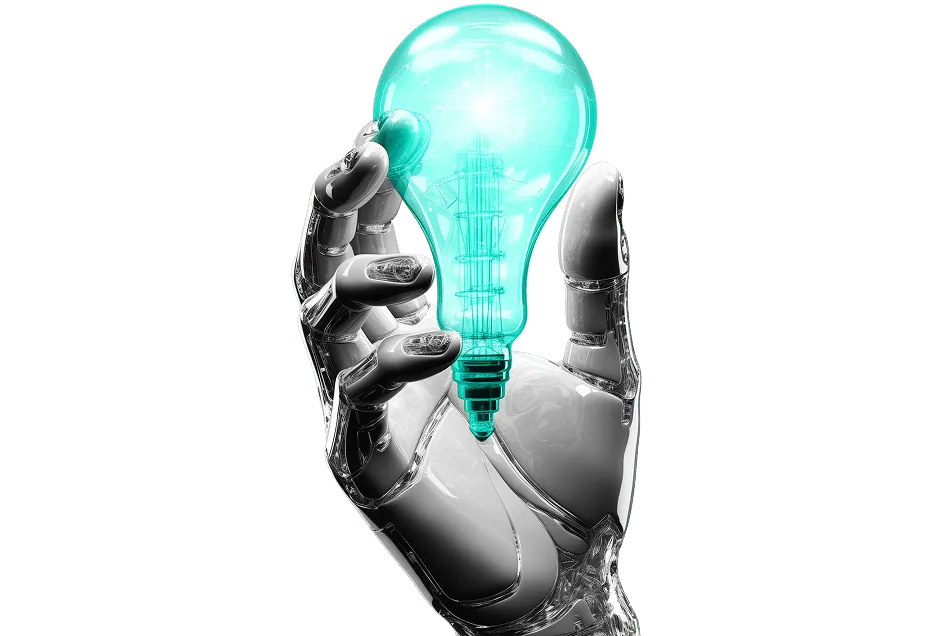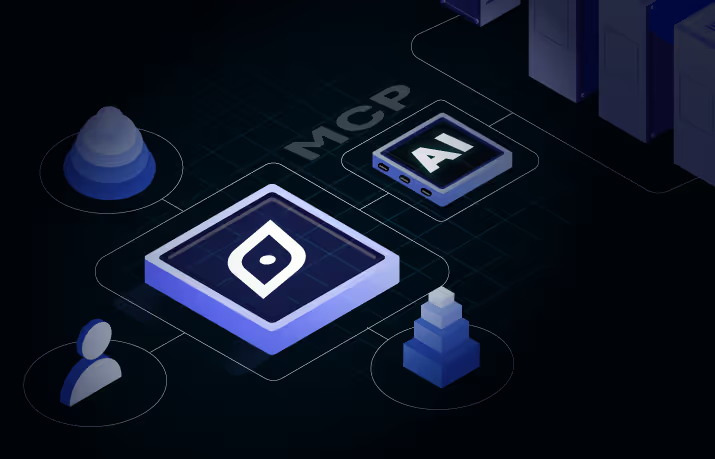Fast-Track Global Strategic AI Talent Acquisition and Recruitment with AI
Manual analysis in talent acquisition (TA) workflows is resource- and time-intensive. Leverage AI into your recruiting workflows to streamline your global talent acquisition strategy and fast-track recruitment.
The benefits of AI talent acquisition are:
- Faster Talent acquisition
- Reduced talent costs
- 3X larger talent pool
Navigating today’s strategic AI talent acquisition and recruitment landscape requires recognizing the transformative impact of AI.
If you have a global team, AI-powered analysis and insights from the global labor market data can help your AI talent acquisition and recruitment team take data-backed, informed decisions.
AI streamlines your search by suggesting talent matches based on skills and expertise.
60% of global enterprises are already banking on AI talent acquisition insights to enhance their recruitment teams’ efficiency and improve decision-making.
60% of the global enterprises are allocating a special budget for AI-powered recruiting software.
When hiring in distributed locations, enterprises are leveraging AI-powered talent location analysis to – spot talent trends in different locations and learn about the location’s talent and skill availability.
Role of AI Talent Acquisition and Recruitment
AI Talent acquisition is a strategy to attract specialized talent.
- It is a strategic approach that anticipates future staffing requirements based on business needs.
- The focus is on the hard-to-fill positions.
- It requires interdepartmental insights into the required skills and experience.
AI Talent acquisition and recruitment play a role in an organization’s talent acquisition cycle.
- It is a tactical approach that fills immediate requirements.
- The focus is on volume hiring for entry-level roles.
- Recruiters deploy ready recruiting plans to hire when needed.
AI enables stakeholders to quickly match quality candidates and take data-driven AI talent acquisition and recruitment decisions.
96% of HR leaders believe AI talent acquisition will greatly enhance recruitment.
Global AI talent acquisition teams have recognized the value of AI, where machine learning models can shortlist, ideal candidates based on skills.

Let us look at what it can achieve:
- Candidate matching
Traditional recruitment relies on matching resumes with job descriptions but can overlook candidates’ potential due to keyword mismatches.
AI can show profiles instantly. It can analyse key responsibility areas and exact workloads, and their job experience profile to give insights into career trajectory, skills adjacencies, interest areas, and pay structures.
Case in point, when looking for a Project Manager, AI finds profiles, examines their progress through roles, evaluates their skills expansion and shows a list like how it is shown in the image, for alignment of their interests/aspirations with company objectives and culture.

2. Talent insights
AI talent acquisition enhances recruitment teams’ capability to gain deep insights into the talent pool. Companies can identify emerging skills and analyze the supply/demand dynamics of the market.
Paypal used the AI Talent acquisition platform to broaden their understanding of skills and interpret the data for better AI talent acquisition and recruitment.
Also, AI talent acquisition platforms can conduct compensation benchmarking and provide real-time compensation insight.
Use case: Financial analyst
AI Talent Intelligence analyzes the financial analyst position, factors in the geographical distribution of talent, pay structure trends, and adjusts offers as per location and experience level to stay competitive.
- Peer benchmarking
AI talent acquisition compares recruitment trends with peers to determine the quality, speed, efficiency, and effectiveness of their AI talent acquisition and recruitment initiatives.
The insight helps teams to implement best practices throughout the organization, including refining their AI talent acquisition and recruitment criteria accordingly to achieve the following:
- Attract skilled talent.
- Formulate pay equity and transparency.
- Adhere to budgets and reduce costs.
Also, with insights into metrics like time-to-fill, cost-per-hire, quality, and diversity, AI talent acquisition and recruitment teams can determine their budget per role and make a better offer to the candidate that’s consistent with market value.
- Global talent location analysis
AI Talent Intelligence can analyze data to identify where the best talent pools are located for specific skills.
Location analysis counts the following metrics
- Talent supply and demand
- The total supply of talent in the market including the number of available talents with the job titles, skills, and salary range.
- Indicates the in-demand job role for a given market. For example, software developers in Atlanta, it indicates demand is high for that talent in that market.
- Competition measures the aggressiveness of competitors recruiting talent for the same role.
- As diversity and hiring is important, it makes sense for companies to look at markets that are already hiring a diverse talent pool.
- Education pipeline
- Large companies have their presence in cities with many colleges and universities.
- Determine if a particular city consistently attracts or supplies skilled talent, another major recruitment advantage.
- Culture and quality of life
- Which markets offer employees to commute quickly and safely. A short commute is often a big draw for top-tier talent.
- Cities with drawing power due to a robust business and startup ecosystem draws employers.
The AI-driven talent insights support the organization’s decision to open new offices in locations with a high concentration of the desired skills that will align with the projects.
Examples of using AI talent acquisition and recruitment
- AI-based analysis has found that the top cities for AI/ML skills include Bengaluru, Delhi, Hyderabad, and Delhi. While top employers included Accenture, IBM, Microsoft, TCS, and Amazon, who can choose from a talent pool of 110,000 across India.
- In another analysis, USA has more than 69,000 Switch Technicians, with 40% concentrated in New York, Los Angeles area, and Greater Chicago. Top employers include AT&T, Verizon, Tesla, among others.
How to build a solution to impact AI talent acquisition and recruitment
Let us look at how to create AI talent acquisition and recruitment platform to improve recruitment effectively
- Identify the right use cases
- Determine the right approach to derive insight from the data – AI, an algorithm, or manual
- Identify the use cases to apply AI and yield the insights.
For instance, Use AI to identify promising talent instantly which would otherwise take time if done manually.
- Data acquisition and model selection
- Select the right data and AI models which aligns with requirements such as candidate matching or skill gap analysis.
- Ensure data is relevant and high-quality so AI models give error-free insights.
- Training and testing
- Rigorously train and test the AI models with AI experts and SMEs, analyze real-world data until it reaches the desired accuracy and effectiveness.
- Integration and feedback
- Integrate AI talent acquisition and recruitment workflows
- Take continuous feedback to iterate and enhance user-experience, impacting recruitment workflows and RoI.
“The most practical method for global enterprises across industries is to utilize AI talent acquisition platforms.”
Measure success of AI in talent acquisition and recruitment
67% of recruiters believe that AI talent acquisition has improved the recruitment process.
Organizations must evaluate a range of factors that represent operational, user-centric, technical, and financial outcomes to determine the effectiveness of AI talent acquisition deployments in recruiting, which include:
- Operational improvements
Reduction in manual effort, time-to-hire, hire quality, and recruitment process efficiency are important indicators to evaluate AI’s efficacy.
Analyze workload improvements by examining the hours HR staff spends on manual tasks like screening resumes.
- User experience and problem solving
Next, assess how AI has improved the recruitment process – improvement of communication and the application process.
Conduct an organization-wide survey to learn about user impressions of the AI-enhanced process. Measure satisfaction levels and report advancements in handling recruitment-related challenges.
- Technical performance
The performance metrics for AI include accuracy, precision, and the system’s capacity to scale as required.
These metrics helps comprehend how well AI is accomplishing the tasks for which it was designed.
- Financial impact
The computation of RoI is a measure of revenue gains associated with employing skilled talent quickly and the cost effectively.
- Examine the changes in recruitment costs, including recruitment spending and advertising expense.
- Evaluate contributions of new talent to sales or other revenue-generating activities.
Typical challenges to developing AI talent acquisition and recruitment platform in-house

While the benefits of customized AI solutions are significant, there are some key challenges:
- Talent shortages
As demand for AI talent exceeds the supply, organizations cannot find and retain skilled AI talent.
As competition for skilled AI talent increases, compensation levels also increase, driving up costs and delaying the development of in-house AI talent acquisition and recruitment platform.
- Development time and costs
Developing an AI Talent Intelligence platform is complex and resource intensive. Delays will affect the organization’s ability to adapt to changes, resulting in the loss of competitive edge.
- Data requirements
Organizations need high-quality data for their AI, which is relevant, well-annotated, and reflective of the market.
AI models may fail to accurately match candidates or predict hiring needs, potentially leading to poor hiring decisions and efficiency.
- Integration complexity
38% of organizations report understanding the efficacy of AI tools and struggling with systems integration.
Integrating AI Talent Intelligence with existing systems requires infrastructure changes but may cause downtimes and internal resistance, driving cost.
For most organizations without extensive AI capabilities, leveraging an established AI Talent Acquisition platform offers a reliable and cost-effective approach to improve their talent acquisition and recruitment efficiency.
AI-based Talent Intelligence offers the following benefits:
- Automate manual tasks to analyze the talent pool instantly.
- Match candidates for job roles based on skills, experience, and cultural fit.
- Improve time-to-hire and quality of hire.
- Eliminate bias when AI models look for matches based on ethnicity and location.










.svg)
















.svg)





.svg)





.svg)
